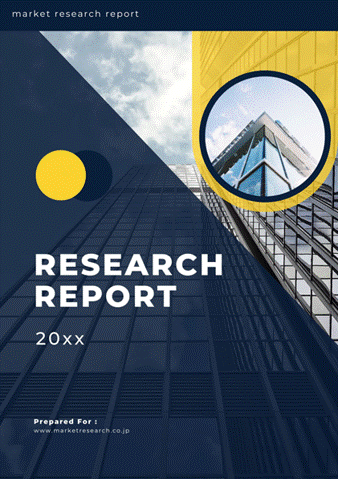 | • レポートコード:D0-MOR-AP1107 • 出版社/出版日:Mordor Intelligence / 2020年4月20日 • レポート形態:英文、PDF、110ページ • 納品方法:Eメール(受注後2-3営業日) • 産業分類:食品&飲料 |
| Single User | ¥629,000 (USD4,250) | ▷ お問い合わせ |
| Team User | ¥703,000 (USD4,750) | ▷ お問い合わせ |
| Corporate License | ¥1,110,000 (USD7,500) | ▷ お問い合わせ |
• お支払方法:銀行振込(納品後、ご請求書送付)
レポート概要
| 本調査レポートは、無糖食品及び飲料の世界市場について調査・分析した資料で、無糖食品及び飲料の市場概要、動向、セグメント別市場規模、地域別分析、競争状況、企業情報、市場機会分析などで構成されています。 |
Market Overview
The global sugar-free food and beverage market is projected to grow at a CAGR of 9.36% during the forecast period.
– Mounting incidences of diabetes and overweight/obesity are pushing consumers from sugar and toward sugar-free alternatives. Both conditions are in fact prevalent.
– The American Heart Association recommends no more than six teaspoons of added sugar a day for women to be safe from diabetes and obesity. Moreover, less sugar prevents glycation.
– The increasing demand for low-calorie beverages and the associated cost-cutting advantage of using sugar substitutes is perhaps considered to be the foremost reason for the growth of the sugar-free foods and beverages market.
Scope of the Report
The global sugar-free food and beverage market is segmented by product type into beverages, dairy, confectionery, bakery, and other product types. Based on the distribution channel, the market can be classified into supermarkets/hypermarkets, convenience stores, specialty stores, online stores, and others. Furthermore, the market is segmented on the basis of geography.
Key Market Trends
Free-from foods are Catching Consumer Attention
With the realization of the ever-growing threat to health on the consumption of poorly processed food, the consumers have become conscious regarding what to eat and what not to. This transition from a conventional mindset to a well-being-conscious one has compelled the manufacturers to come up with more innovative products to edify their product offerings. Dairy-free, lactose-free, gluten-free, and sugar-free are the most common free-from claims that appear on the products. For example, That’s it, a fruit bar company, manufactures bars with eight allergen-free claims, along with a vegan, non-GMO, and gluten-free claim.
The Global Sugar-Free Food and Beverage Market is Dominated by North America
The World Health Organization found that a rise in fast food sales is correlated to a rise in body mass index, and Americans are very much fond of fast foods. Rising concerns regarding obesity and diabetes through extensive awareness means consecutively generate the demand for healthier food and beverage products in the market. The American consumers, therefore, accepted the Sugar-free concept offerings very well and so the manufacturers commenced repositioning and validating the recipe of the products as the primary strategy to serve the diverse demands and strengthen the consumer base. For instance, Heinz has introduced sugar-free ketchup which can be a part of fast foods to render the deliciousness, but with lesser calorie addition.
Competitive Landscape
Consumers are very concerned about the health characteristics of their food, and of environmental and social impact, now more than ever. Owing to this, the major market players are coming up with new ideas to tackle the arising concerns to justify their supremacy. For instance, Nestle S.A introduced a KitKat bar that distills its sweet flavor from a cocoa fruit without any added refined sugar. Nestle is converting the cocoa pulp into a powder and adding it to chocolate as a sweetener.
Reasons to Purchase this report:
– The market estimate (ME) sheet in Excel format
– Report customization as per the client’s requirements
– 3 months of analyst support
1 INTRODUCTION
1.1 Study Deliverables
1.2 Study Assumptions
1.3 Scope of the Study
2 RESEARCH METHODOLOGY
3 EXECUTIVE SUMMARY
3.1 Market Overview
4 MARKET DYNAMICS
4.1 Market Drivers
4.2 Market Restraints
4.3 Porter’s Five Forces Analysis
4.3.1 Bargaining Power of Suppliers
4.3.2 Bargaining Power of Buyers/Consumers
4.3.3 Threat of New Entrants
4.3.4 Threat of Substitute Products
4.3.5 Intensity of Competitive Rivalry
5 MARKET SEGMENTATION
5.1 Product Type
5.1.1 Beverage
5.1.2 Dairy
5.1.3 Confectionery
5.1.4 Bakery
5.1.5 Other Product Types
5.2 Distribution Channel
5.2.1 Supermarkets/Hypermarkets
5.2.2 Convenience Stores
5.2.3 Specialty Stores
5.2.4 Online Stores
5.2.5 Other Channels
5.3 Geography
5.3.1 North America
5.3.1.1 United States
5.3.1.2 Canada
5.3.1.3 Mexico
5.3.1.4 Rest of North America
5.3.2 Europe
5.3.2.1 Spain
5.3.2.2 United Kingdom
5.3.2.3 Germany
5.3.2.4 France
5.3.2.5 Italy
5.3.2.6 Russia
5.3.2.7 Rest of Europe
5.3.3 Asia-Pacific
5.3.3.1 China
5.3.3.2 Japan
5.3.3.3 India
5.3.3.4 Australia
5.3.3.5 Rest of Asia-Pacific
5.3.4 South America
5.3.4.1 Brazil
5.3.4.2 Argentina
5.3.4.3 Rest of South America
5.3.5 Middle East and Africa
5.3.5.1 South Africa
5.3.5.2 Saudi Arabia
5.3.5.3 Rest of Middle East and Africa
6 COMPETITIVE LANDSCAPE
6.1 Most Adopted Strategies
6.2 Market Share Analysis
6.3 Company Profiles
6.3.1 The Hershey Company
6.3.2 Nestle S. A
6.3.3 Kellogg
6.3.4 Mars, Incorporated
6.3.5 PepsiCo, Inc.
6.3.6 The Coca-Cola Company
6.3.7 Kraft-Heinz, Inc.
6.3.8 Conagra Foodservice, Inc.
6.3.9 Chocoladefabriken Lindt & Sprungli AG
7 MARKET OPPORTUNITIES AND FUTURE TRENDS